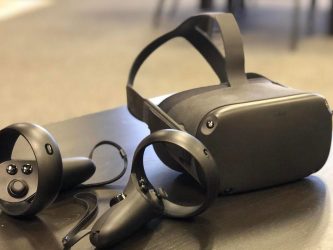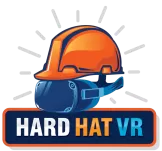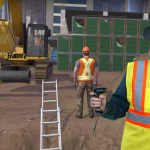
Corporate safety training has been stuck with the same passive-learning format for probably the last 15-20 years. But as we enter the next decade, our training technology needs to advance with the younger generation of workers.
One of the biggest problems facing America’s manufacturing and construction industries is that they are currently growing faster than they have in decades. But wait! That should not be a drawback, should it? If there wasn’t a shortage of skilled laborers stunting their respective growths, then no, it would not. The declining number of trade school graduates over the past few decades has left a gaping hole in potential employees, meaning that job openings remain unfulfilled as companies bend over backward to attract new talent to replace the current aging workforce.
Training New Hires
How can manufacturing companies train new hires in cost-effective, engaging, and interesting ways that will encourage them to work longer in the industry? First, we are going to have to do something about the current training structure. Nothing will scare a millennial workforce—which has been raised on technology since youth—faster than a drawn out, boringly-monotonous, PowerPoint-style lecture that they have to watch on a computer screen. Modern learners place an increasingly high value on engaging learning environments that are able to both attract and maintain their attention spans, which have been shortened by the constant barrage of digital content they have grown accustomed to. Know more about it by visiting here.
The concept of virtual reality first excited people as a fun new way to play video games, but it is now apparent that VR is also a tool that can offer unique, immersive training for new employees, preparing them for both hazards and everyday workflow before they even set foot on the job. Using 360° filming techniques on site can give trainees a complete picture of what is around them, familiarizing them with the floor layout and machine operations. These realistic environments can accurately simulate real-life scenarios, preparing workers for fires, fall prevention, chemical spills, and more. The “learning by doing” structure has been proven to enhance learning retention and, paired with VR, “doing” can be a reality for trainees without the risk of injury.
Benefits
Now, VR training may be exciting for the trainee, but how does it benefit the employer? We know that the bottom line for every company is money, and the million-dollar question is “How will VR training help my company save it?” Current training often takes seasoned employees (or expensive, outside trainers) off the job and into the classroom, where they will present a standardized slide lesson that is the same for everyone. This format can grow costly, especially because of the low labor retention and high turnover rates that many of these industries are facing.
The “reality” element in VR training can help employers weed out trainees that might not be a good fit for their company by placing benchmarks in the assessments of every trainee’s results. Plus, VR training modules can be built specifically for the company, so that the training can be as accurate and personalized as possible. An added benefit is that in addition to training new hires, this technology can serve as a refresher course for current employees on product assembly, hazard recognition, equipment handling, and more to ensure that they are up to speed with current company and OSHA standards. Lastly, as new hires are trained in VR, employee injury and fatality rates will most likely go down. A majority of workplace injuries and death occur within the first year of employment, meaning that new hires are not being trained as efficiently as they should. Given that VR will simulate real-world situations, new hires will be better equipped to avoid the most frequent causes of accidents, making the workplace a safer environment for all. For more information, click here.
All this goes to show is that the most risk-free, efficient, engaging, and cost-effective way to train the next generation of workers is through virtual reality. Gone are the hours of sitting through safety training videos all day; interactive VR training helps to build muscle memory in employees, preparing them for real-life situations before they even venture out onto the ground floor of their industry. Get ready for a safer, younger, and more adept workforce that will take your company’s efficiency and safety to a higher level.







